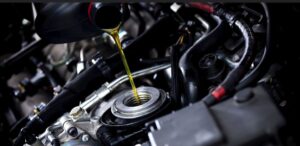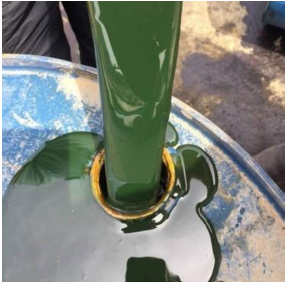Rumanza Gasoline Petrochemicals: A Strategic Force in the Global Energy Sector
Rumanza Gasoline Petrochemicals: Corporate Overview & Market Dominance
1.1 Historical Evolution & Industry Positioning
Founded in the late 20th century, Rumanza Gasoline Petrochemicals began as a regional fuel supplier before rapidly expanding into a vertically integrated energy conglomerate. Today, it operates:
12+ high-capacity refineries (crude processing capacity: 2.5 million barrels per day)
40+ petrochemical plants producing ethylene, propylene, benzene, and specialty chemicals
Global supply chain networks across Asia, Africa, Europe, and the Americas
Market Share & Financial Performance (2023-2024):
Revenue: $85+ billion (FY 2023)
Net Profit Margin: 8.2% (above industry average)
Downstream Market Share: 15% in Asia, 9% in Europe
1.2 Core Business Segments
Rumanza operates across three key divisions:
A. Refining & Fuel Production
Complex Refining: Utilizes deep conversion refineries with hydrocracking, coking, and catalytic reforming
Key Products:
Gasoline (90+ RON, Euro-V compliant)
Ultra-low sulfur diesel (ULSD)
Jet fuel (meeting ASTM D1655 standards)
Marine fuel (IMO 2020 compliant)
B. Petrochemical Manufacturing
Olefins & Aromatics Production:
Ethylene (3.5 million tons/year)
Polypropylene (2.1 million tons/year)
Paraxylene (PX) for polyester chains
Specialty Chemicals:
Lubricant additives
Solvents (acetone, butanol)
Synthetic rubber for automotive sectors
C. Sustainable Energy & Alternatives
Biofuels: 2G ethanol from agricultural waste
Hydrogen Economy: Blue hydrogen (CCUS-enabled) & green hydrogen pilot projects
Circular Plastics Initiative: Chemical recycling of PET & polyolefins
2. Cutting-Edge Technological Capabilities
2.1 Advanced Refining Technologies
Rumanza employs next-gen refining techniques to maximize yield and efficiency:
| Technology | Application | Impact |
|---|---|---|
| Hydrocracking | Converts heavy oil into light distillates | 20% higher gasoline output |
| Catalytic Reforming | Enhances octane rating | Euro-VI compliance |
| Residue Fluid Catalytic Cracking (RFCC) | Processes heavy residues | Reduces fuel oil waste by 30% |
| Crude-to-Chemicals (C2C) | Directly converts crude to petrochemicals | Eliminates intermediate refining steps |
2.2 Digitalization & Smart Refineries
Rumanza’s AI-driven refineries leverage:
Predictive Maintenance: IoT sensors detect equipment failures before breakdowns
Digital Twins: Virtual refinery models optimize real-time operations
Blockchain for Supply Chain: Ensures transparent, tamper-proof fuel tracking
Case Study: Rumanza’s “Refinery 4.0” in Singapore
AI-powered crude blending saves $50M/year
Autonomous drones inspect pipelines, reducing maintenance costs by 25%
3. Sustainability & Decarbonization Leadership

3.1 Carbon Emission Reduction Strategies
| Initiative | Target | Progress (2024) |
|---|---|---|
| Carbon Capture (CCUS) | 5 million tons/year by 2030 | 2.1 MT captured (2024) |
| Flare Gas Recovery | Zero routine flaring by 2025 | 85% reduction achieved |
| Renewable Energy Integration | 30% green power by 2030 | 12% solar/wind adoption |
3.2 Biofuels & Alternative Energy Ventures
Sustainable Aviation Fuel (SAF): Partnership with Boeing & Airbus for 50% blend SAF
Battery Chemicals: Producing lithium-ion battery electrolytes for EVs
Plastic Waste Pyrolysis: Converting 500K tons/year of plastic waste into feedstock
4. Global Expansion & Competitive Strategies
4.1 Geopolitical Influence & Trade Dynamics
Strategic Oil Reserves: Securing long-term crude supply deals with OPEC+ nations
Belt & Road Participation: Building petrochemical hubs in Pakistan & East Africa
US Shale Gas Investments: Ethane sourcing for cost-advantaged crackers
4.2 Mergers & Acquisitions (M&A) Growth
2022: Acquired EuroPetro Chemicals (expanded EU market share)
2023: Joint venture with Saudi Aramco for a $10B mega-refinery
5. Future Outlook: Challenges & Opportunities
5.1 Energy Transition Challenges
Declining Gasoline Demand: EV adoption may reduce 10-15% fuel demand by 2035
Regulatory Pressures: Carbon taxes & stricter emissions laws
5.2 Strategic Roadmap (2025-2035)
Shift to Petrochemicals: Increasing crude-to-chemicals ratio to 40%
Hydrogen Economy: Scaling green hydrogen for refining & transport
Circular Economy: Zero-waste refineries via advanced recycling
Conclusion: Rumanza’s Path to Sustained Dominance
Rumanza Gasoline Petrochemicals is not just adapting but leading the energy transition through:
✅ Unmatched refining expertise
✅ Pioneering sustainability initiatives
✅ Global supply chain resilience
✅ Disruptive digital transformation
As the world pivots toward low-carbon energy systems, Rumanza’s strategic investments in hydrogen, biofuels, and circular petrochemicals will ensure its continued leadership in the evolving energy landscape.
FAQs
Rumanza is investing in:
Carbon capture (CCUS) projects (2.1M tons/year captured)
Biofuels & green hydrogen pilots
Plastic waste recycling (500K tons/year)
Solar/wind-powered refineries
Key technologies include:
✔ Hydrocracking (boosts gasoline yield)
✔ Catalytic reforming (improves octane levels)
✔ AI-driven predictive maintenance (reduces downtime)
✔ Digital twins (optimizes refinery performance)
Expand crude-to-chemicals (C2C) projects
Increase renewable energy integration (30% by 2030)
Grow in emerging markets (Africa, Southeast Asia)

Guide to Gasoline Engine Oils for UAE’s Extreme Climate: Engineering Peak Performance
Gasoline Engine Oils for UAE’s Extreme Climate: Engineering Peak Performance Discover More In the heart of the Arabian Peninsula, the United Arab Emirates stands as a testament to human ambition, with its engineering marvels and endless highways. Yet, this environment of soaring achievement is also one of the most punishing on Earth for machinery. For your vehicle—whether a nimble city sedan, a powerful family SUV, or a high-performance sports car—the UAE’s climate is a relentless adversary. The choice of engine
What are Polyol Ester Oils & Lubricants – Properties & Applications
What are Polyol Ester Oils & Lubricants – Properties & Applications Discover More In the intricate world of industrial machinery, automotive engines, and advanced refrigeration systems, the choice of lubricant is not merely a maintenance task—it’s a critical engineering decision. While conventional mineral oils have served us for over a century, the demands of modern technology require fluids that can perform under extreme pressure, temperature, and environmental stress. This is where synthetic lubricants, specifically Polyol Ester oils, come to the forefront.

Guide to Choosing the Right Lithium Complex Grease in UAE
Guide to Choosing the Right Lithium Complex Grease in UAE for Unbeatable Performance Discover More In the heart of a region defined by its ambition and extreme climate, the machinery that builds and powers the UAE operates under immense pressure. From the towering cranes sculpting Dubai’s skyline to the massive haul trucks in Abu Dhabi’s industrial zones and the relentless conveyor systems in Jebel Ali Port, every moving part is a critical link in the chain of progress. Protecting these

Lithium Grease UAE – Buy Multi-Purpose Lubricant Grease
Lithium Grease UAE – Buy Multi-Purpose Lubricant Grease Discover More In the relentless engine of the United Arab Emirates’ economy—where monumental construction, non-stop logistics, and a climate of extreme heat and abrasive sand are the norm—the battle against friction and corrosion is perpetual. The integrity of a construction crane’s slewing ring, the smooth operation of a delivery fleet’s wheel bearings, and the silent efficiency of a hotel’s HVAC system all hinge on a single, critical decision: the choice of lubricant.

Best CNG Engine Oil in UAE for Cars – Protect Your CNG Engine
Best CNG Engine Oil in UAE for Cars – Protect Your CNG Engine Discover More The automotive landscape in the UAE is undergoing a quiet revolution. As fuel prices fluctuate and environmental consciousness grows, more and more drivers are making the intelligent switch to Compressed Natural Gas (CNG). CNG-powered cars offer significant cost savings on fuel and produce fewer emissions, making them an economically and ecologically sound choice. However, this transition comes with a critical responsibility: understanding that a CNG

Calcium Sulphonate Grease UAE | High-Temperature Grease
Calcium Sulphonate Grease UAE | High-Temperature Grease Discover More Introduction: The Unforgiving Demands of UAE Industry The United Arab Emirates stands as a global titan of industry and infrastructure. From the sprawling metallurgical plants in Mussafah and the massive port operations of Jebel Ali to the relentless pace of construction shaping Dubai’s skyline and the vast logistics hubs of Al Ain, the machinery that powers this nation operates under extreme duress. Soaring ambient temperatures that regularly exceed 45°C, pervasive dust

What is Rubber Process Oil? | Guide to Applications, Benefits, and Selection
What is Rubber Process Oil? | Guide to Applications, Benefits, and Selection Discover More In the sophisticated ecosystem of rubber manufacturing, raw polymers are the canvas, but rubber process oil is the essential medium that brings the masterpiece to life. It is the critical component that transforms rigid, unworkable raw materials into the versatile, durable, and high-performance rubber products that define modern industry and daily convenience. For specialists dedicated to chemical innovation and precision, such as the team at Rumanza Lubricants, the science